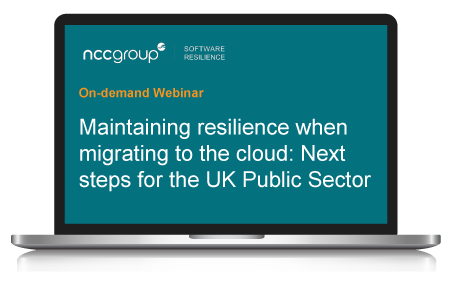With public sector cloud computing playing a crucial role in governments’ efforts to provide new citizen-centric services, it is no surprise there is a strong desire to move to cloud. This is due to the UK Government cloud first strategy announced in 2013 which has been adopted by all parts of the UK public sector.
As a result, over the last five years, public sector cloud computing and Central Government G-Cloud spend has been rising and the trend suggests it will continue on this trajectory. In fact, research found that public sector cloud computing adoption has increased by 49% as a direct result of the Covid crisis.
Although there are trends in growth, the rate of public sector cloud computing adoption is behind in comparison to G-Cloud spend by the Central Government. For example, a survey by UK Cloud suggests that 85% of public sector organisations have cloud security reservations with 63% yet to adopt a dedicated cloud strategy. As a result, 70% of their infrastructure and 73% of their data remain on premise.
A move to the cloud doesn’t decrease security - it increases it. 78% of public sector organisations cite fear of failure as a barrier to using cloud, whilst other key concerns include fear of lock-in with one vendor and an over reliance on one sole third-party vendor.
Ultimately, it’s the lack of visibility and the loss of in-house knowledge of how to rebuild an application which has resulted in public sector cloud computing reluctance, especially for secure and sensitive systems.
Different verticals within the public sector are at different stages of their cloud adoption policy, which suggests that there isn’t a clear strategy or policy around the use of cloud technology.
For example, Central Government are mandated to adopt the government cloud first strategy before considering any other option. NHS organisations on the other hand have major concerns about losing control of sensitive patient data and have been more reluctant to go down this road, which suggests that migrating traditional and sensitive systems from on-premise environments to the appropriate cloud is a clear issue.
Most public sector organisations are more focused on developing new applications whilst little consideration is given to the lift and shift approach. Many organisations believe that if there were more dedicated cloud hosting technologies that could mirror their existing environments, they would be more willing to move to the cloud.
In conversations with our clients, it’s clear that a lack of operational knowledge on how to rebuild a cloud-based system in the event of vendor failure is a major concern.
In a public sector cloud computing survey 85% of respondents across 300 public sector organisations believe that cloud is more expensive than their on-premise equivalent for traditional applications. Because of this, the UK public sector is turning to multi-cloud and private cloud environments since it is a more cost-effective alternative to on-premise environments than public cloud.
The migration and refactoring of applications when moving to the cloud can also bring incremental costs which is a challenge, especially when the sector is used to fixed pre-determined annual budgets.
There remains a universal desire to move IT environments into the cloud, with 87% of public sector organisations stating they would move all their IT to the cloud if the perfect solution existed. This shift in mindset means public sector organisations are no longer thinking “why should I move to the cloud?” but more “how can I move to the cloud in a practical, resilient and secure way?”.
On-demand Webinar
In this webinar we discuss the growing use of cloud services, how to overcome public sector cloud computing migration challenges and how to adopt the government cloud first policy.

Watch on-demand as our public sector cloud computing experts detail the steps involved in overcoming any potential roadblocks to cloud adoption and discuss the role cloud escrow plays in ensuring third-party cloud infrastructure and applications are secure and resilient.